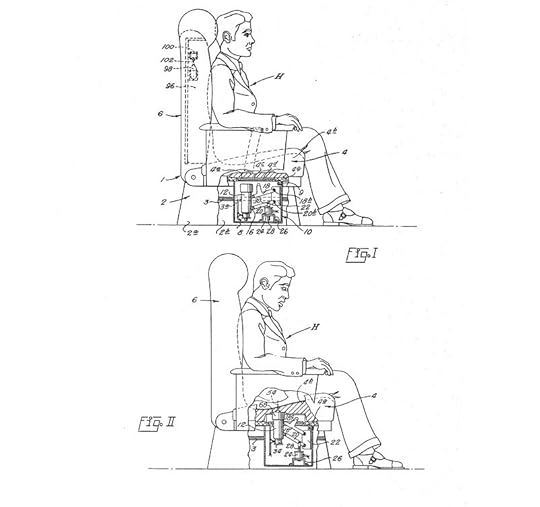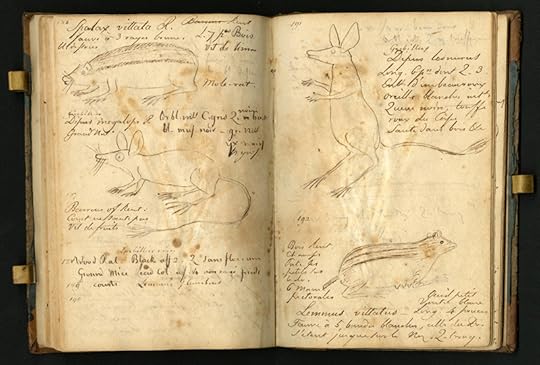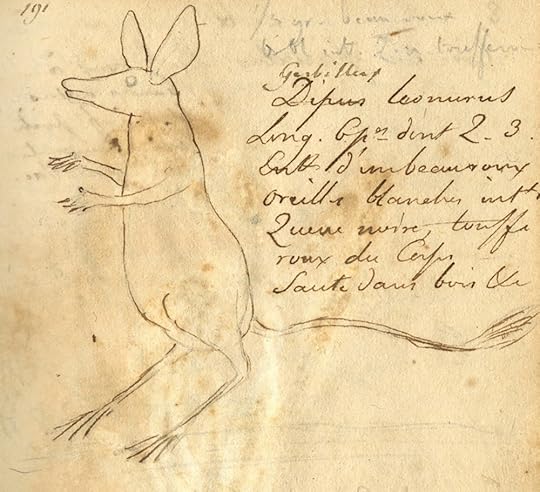Ripley Entertainment Inc.'s Blog, page 488
May 19, 2016
Baby Born with Polydactylism has 31 Fingers and Toes
Featured in Ripley's Believe It or Not!

It’s a big word with Greek origins, so chances are you haven’t heard the term Polydactylism even though you probably know what it means.
Polydactyly is a deformity that affects humans, dogs, and cats, in which a person is born with one or more extra fingers and toes.
During normal embryonic development, hands start off as a kind of paddle shape and then the fingers split from there at about the six or seven-week mark. For a fetus affected by this condition, the hand will split with an extra finger.
It’s one of the most common congenital hand defects, affecting one out of every 500 to 1,000 live births. But generally, it results in only an extra finger or thumb. That wasn’t the case, however, for young Hong Hong.
Hong Hong’s Special Case
Hong Hong was born in January in the Hunan province of China. Instead of just one extra finger or toe, Hong Hong was born with a total of 31 digits. The baby boy has 15 fingers and 16 toes.

Photo by VCG/VCG via Getty Images
In addition to his extra phalanges, Hong Hong has two palms on each hand, and no thumbs. So in spite of his hand forming so many extra fingers, none of them developed into a functioning opposable thumbs.
This will pose a problem when it comes time for surgery because the doctors will be charged with creating thumbs somehow if Hong Hong is to have any hope of normal dexterity.
The surgery needed to correct the infant’s Polydactylism will cost roughly 200,000 Chinese yuan, or $30,000. To raise the money, his parents created a crowdfunding campaign. They had raised more than $6,000 when they decided to halt their efforts. Hong Hong’s father said he was uncomfortable with some of the comments being left on the crowdfunding page.
For the time being, the family is heading back to their home to come up with a plan. Hong Hong is still too young for the surgery. A doctor at Hunan Province People’s Hospital told Hong’s father that his son should have an operation between six months and 1 year old.
Source: Baby Born with Polydactylism has 31 Fingers and Toes
CARTOON 05-19-2016
May 18, 2016
Skyjacking Craze of the 1960s
Featured in Ripley's Believe It or Not!

When Orville and Wilbur Wright made their historic first flight in 1903, neither one was probably thinking much about airport security. In fact, nobody was thinking about it 50 years later when airplane hijacking (skyjacking) became a weekly performance.
The first case of skyjacking happened to flying daredevil Jimmy Angel, who managed to foil his attacker by executing a barrel-roll in hi open cockpit bi-plane and dumping the skyjacker out.
Throughout the 50s and 60s skyjacking grew increasingly prevalent; you could get out of your car and walk right onto the airport tarmac and right onto a plane without having to show any tickets or identification. Tickets sometimes went unchecked until after takeoff.
From 1961 to 1972, nearly 160 planes were hijacked in the US.
Embed from Getty Images
The Routine
Hijackers weren’t all that fussy, most just wanted a few hundred grand and to be dropped off in Cuba. The worst passengers expected was an impromptu tropical vacation, a suitcase of cigars, and some good dinner conversation when they got back.
Airlines typically gave into demands right away, forking over a few hundred thousand dollars and relying on the Swiss embassy in Cuba to return their missing planes. The Swiss consul even kept pre-typed forms for sending American planes home.
Airlines also made it standard practice to have maps of the Havana airport stowed in the cockpit no matter where the plane was headed.

Combatting Skyjackers
Instead of implementing security, airlines thought it was more cost effective just to give in to skyjackers’ demands; they felt that security screenings would drive away more customers than the criminals.
A government task force was eventually set up to develop ideas for stopping skyjackers. Some of these plans involved a special seat on the plane that could either be ejected James Bond-style or had a secret syringe mechanism that could “sedate or kill” the hijacker.

Another plan was to require all passengers to wear boxing gloves, rendering them incapable of handling a firearm.
The most ridiculous solution by far was to build a life-sized Havana airport in Miami to fool hijackers into thinking they had landed in Cuba. The plan proved wildly cost prohibitive and was never built.
Getting Serious
It wasn’t until a pair of hijackers threatened to crash their plane into a nuclear reactor that everyone realized the danger of criminals taking control of airplanes.
On January 5, 1973, all passengers began being required to go through metal detectors and have their bags checked.

Source: Skyjacking Craze of the 1960s
Nurse Shark with Attachment Issues
Featured in Ripley's Believe It or Not!

A 23-year-old Florida woman had to be rushed to the hospital after a 2-foot long nurse shark bit her and refused to let go.
Nurse sharks are known to be docile and slow-moving
Reports say the woman and her friends were pulling the sharks tail and harassing it when it turned around and bit
She walked out of the water with the shark attached to her arm
It wouldn’t let go even after it had died from being out of the water too long
Paramedics had to take her to the hospital with the shark still attached to her arm

Photo Courtesy of Boca Raton Fire Rescue

Photo Courtesy of Boca Raton Fire Rescue
MINI BION
“BIONs” – short for Believe It or Not – is the word we use at Ripley’s to refer to anything that is unbelievable and worthy to become part of Ripley’s lore and collection.
Audubon Made Up Animal Species as a Prank
Featured in Ripley's Believe It or Not!

It would be unlikely to go through much of school and not have heard of John James Audubon. He’s got an entire organization named after him. He was a naturalist and ornithologist who used his exceptional painting skills to create the foremost book about American birds.
Audubon was the primary authority on topics of nature and animals in his time. So it stands to reason that the things he had to say on the subject were accepted as factual without much verification.
But what if I told you that the man behind the book The Birds of America was guilty of completely of fabricating entire species of animals as a prank?
Constantine Samuel Rafinesque

Constantine Samuel Rafinesque
To understand why he might be interested in spreading a lie, you have to start with Constantine Rafinesque.
Constantine was considered a genius in his time. He studied a bit of everything from botany to anthropology to linguistics. He was born near Constantinople and traveled around America.
At one point, he was looking to study the plants of America. He thought some of the plants seen in the backgrounds of Audubon’s paintings might have been new species. Who better to spend time with than the foremost authority on American Flora and Fauna?
Rafinesque was in for a bit of a surprise on that front.
Jokes on You
It turns out that Rafinesque wasn’t the most likable person. His genius nature might have made him a bit standoffish or off-putting to people. According to writer John Jeremiah Sullivan, Audubon is the only person on record who actually like Rafinesque.
Perhaps it was friendly joking on his part, or perhaps there was an element of gullibility to Rafinesque, but whatever the reason, Audubon decided to play a joke on him by telling him about animal species that never actually existed.
And of course, because he’s such an authority on the subject, Rafinesque never even thought to question the fake information he was being given.
The species Audubon told him about can be seen below. They’re just plausible enough to not be immediately discredited, but they also each feature an attribute that doesn’t make sense.

The Brindled Stamiter was claimed to have its cheek pouches outside its mouth

Black-Eared Shrew

Lion-Tail Jumping Mouse

Big-Eye Jumping Mouse

Three-Striped Mole Rat
CARTOON 05-18-2016
May 17, 2016
Indian Barber Uses Mouth to Cut Hair
Featured in Ripley's Believe It or Not!

An Indian barber from Varanasi has a very unique process for cutting his clients’ hair. Instead of holding the scissors in one hand and a comb in the other, as is standard, Ansar Ahmad places the handles of the scissors in his mouth!
You’d think his technique would leave people dissatisfied with the final product, but Ansar is so popular that people line up to wait to get their hair cut by him.
Ansar Ahmad has been cutting hair since he was a child. Over the years, he perfected the practice and made a living for himself. But an accident 15 years ago injured one of his hands and left him needing to figure out another way to practice his craft.
As I couldn’t work with one hand, I used to face a lot of problems at that time. It took me three years to learn the art. Now, I can easily cut hair holding scissors in my mouth.
Ever since he taught himself how to cut hair this way, Ansar has continued to employ the technique. It takes him roughly 25 to 30 minutes to give a haircut, but his clients leave his chair so happy that they don’t mind waiting.
The Future
Ansar has already gone viral with videos of him performing his technique being shared across the net. But now he wants recognition beyond what video streaming sites can give him.
On May 3rd, Ansar tried to set a world record by cutting hair with his mouth continuously for 25 hours.
There’s no word yet on whether or not Guinness took note, but Ansar’s feat is nothing short of amazing.
Moving forward from here, Ansar says he would like to start giving barber lessons to people with disabilities or who are visually impaired so that everyone can have the chance to financially support themselves. He’s already begun teaching kids in his neighborhood how to do what he does.
With Robot Surgery, The Future is Now!
Featured in Ripley's Believe It or Not!

In science fiction TV shows and movies, medical advances are almost always marked by quick fixes. Getting hurt in the future is healed by a nano-pod of some kind that heals any and all afflictions. One way or another, the health of human beings is placed in the hands of technology. Never has that concept been closer to reality than it is now.
Scientists from Sheikh Zayed Institute for Pediatric Surgical Innovation have demonstrated that a robot is capable of performing delicate surgery on soft tissue with limited supervision.
The Smart Tissue Autonomous Robot, or STAR, has put stitches into the intestines of four living pigs and all of the pigs have survived without complications.
What’s the Big deal?
You may not think this matters or changes things much. Robotic instruments have been used in laparoscopic surgery for years. That’s true, but this is the first time that a robot has been used to perform a nearly autonomous surgery on soft tissue.
The robot was supervised to make sure it followed the path its computer program put it on, and minor adjustments were made to the thread it sutured with, but other than that it performed on its own.
Until now, autonomous robot surgery has been limited to applications with rigid anatomy, such as bone cutting, because they are more predictable. -Axel Krieger, PhD
More than 44.5 million soft tissue surgeries are performed each year. They’re so difficult because the unpredictable, elastic and plastic changes in soft tissues that occur during surgery, requiring the surgeon to make constant adjustments. If STAR can consistently perform these surgeries, the medical landscape might be forever changed.
But how good could the robot be?
Considering how difficult and complicated these procedures are, you might assume the robot was a heavy-handed butcher. No such luck.
The robot surgery procedures were also completed by experienced surgeons and the results were compared. The STAR proved to be superior to manual surgery in almost every way.
The only place that the surgeons outperformed the STAR was in the time it took to complete the surgery. Manual sutures took eight minutes, but the robot sutures took 30 minutes to complete.
If you want your surgery done quickly, go to a human, but if you want it done expertly, go to a robot.
For surgeons who might be worried about their job security, Dr. Peter C. Kim has these words of comfort.
The intent of this demonstration is not to replace surgeons, but to expand human capacity and capability through enhanced vision, dexterity, and complementary machine intelligence for improved surgical outcomes.
CARTOON 05-17-2016
May 16, 2016
Honeybees Strict No Drinking Policy
Featured in Ripley's Believe It or Not!

Honeybees that get drunk on fermented tree sap are denied access to the hive and are often attacked by the sober bees.
Being drunk effects bees in much the same way it does humans
Drunk bees have more flying accidents and have a hard time finding their way back to the hive
If they do make it back, the drunk bees will be attacked by other bees and its legs will be chewed off
It’s possible that the drunk bee is seen as posing a threat to the safety of the hive
MINI BION
“BIONs” – short for Believe It or Not – is the word we use at Ripley’s to refer to anything that is unbelievable and worthy to become part of Ripley’s lore and collection.
Ripley Entertainment Inc.'s Blog
- Ripley Entertainment Inc.'s profile
- 52 followers






